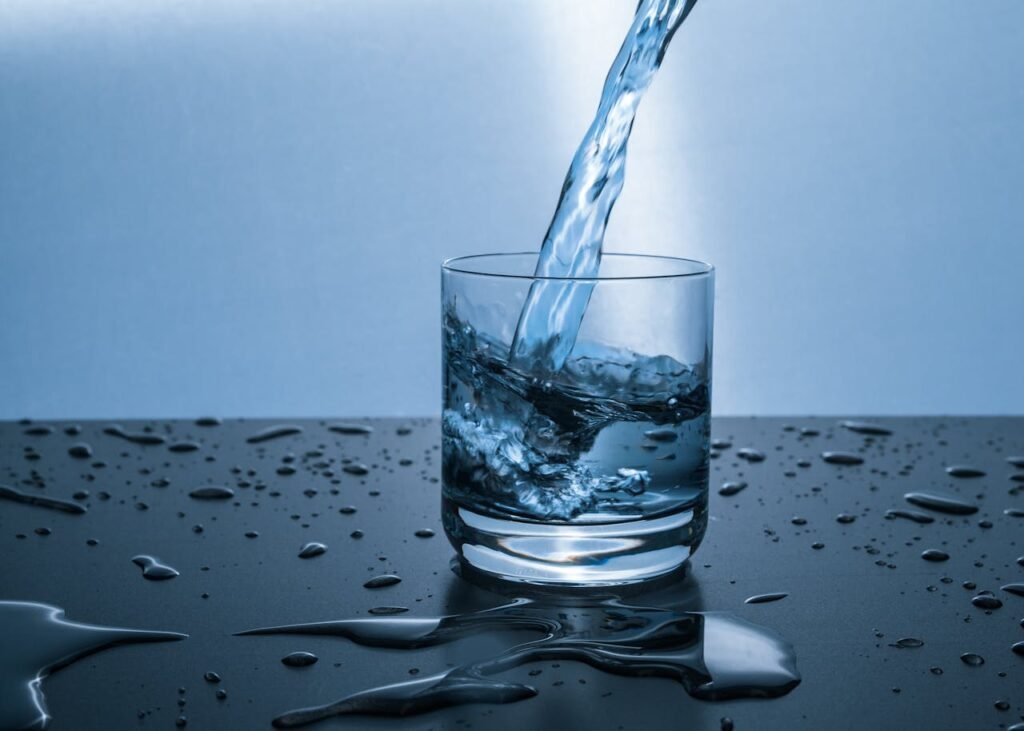How do you make structured water? This comprehensive guide delves into the science behind water structuring and explores various methods to create this intriguing form of water. From vortexing devices to crystal infusion, we examine the principles and techniques used to alter water’s molecular structure.
The article discusses the potential benefits of structured water, including enhanced hydration and improved cellular absorption, while also addressing the ongoing scientific debate surrounding its efficacy. We provide step-by-step instructions for different structuring methods, compare their effectiveness, and answer frequently asked questions.
Whether you’re a health enthusiast or simply curious about water science, this article offers a balanced, in-depth look at the world of structured water, its proposed benefits, and the current state of research in this fascinating field.
Introduction: Understanding Structured Water
How do you make structured water? This question has been gaining traction in health and wellness circles, sparking curiosity about the potential benefits of this unique form of water. Structured water, also known as hexagonal water, magnetized water, or coherent water, is believed to possess properties that make it more beneficial for our bodies than regular tap or filtered water. In this comprehensive article, we’ll delve deep into the science behind water structuring, explore various methods to make structured water, and examine its potential impacts on health and well-being.
What Is Structured Water?
Before we dive into how to make structured water, it’s crucial to understand what it actually is. Structured water refers to H2O molecules arranged in a specific, hexagonal pattern. This arrangement is thought to mimic the molecular structure of water found in nature, such as in mountain springs or glacier melt[1][3].
The concept of structured water is based on the idea that water has a ‘memory’ and can retain information from its environment. This theory suggests that the molecular structure of water can be altered by various external factors, including magnetic fields, vortexing, and exposure to certain minerals or crystals[4][7].
The Molecular Structure of Structured Water
At the molecular level, structured water is believed to form a hexagonal lattice. This structure is created when individual water molecules (H2O) form loose ionic bonds, resulting in an H3O2 lattice[9]. This unique arrangement is thought to give structured water its special properties, including:
- Enhanced hydration capabilities
- Improved cellular absorption
- Increased energy transfer within the body
- Better detoxification properties
It’s important to note that while the concept of structured water is intriguing, the scientific community is still debating its validity and potential benefits. Many of the claims surrounding structured water are based on preliminary research or anecdotal evidence, and more rigorous scientific studies are needed to fully understand its properties and effects[8].

The Science Behind Water Structuring
To understand how to make structured water, we need to explore the scientific principles behind water structuring. The process of structuring water involves altering its molecular arrangement to create a more organized, coherent state[10].
The Fourth Phase of Water
Dr. Gerald Pollack, a professor at the University of Washington, has been at the forefront of structured water research. In his book “The Fourth Phase of Water,” he introduces the concept of a fourth phase of water, which he calls the “exclusion zone” or EZ water[10][11].
According to Dr. Pollack’s research, when water comes into contact with hydrophilic (water-loving) surfaces, it forms a structured layer with unique properties:
- Negatively charged
- More viscous than regular water
- Able to exclude solutes (dissolved substances)
This structured layer is believed to play a crucial role in biological processes and may explain some of the proposed benefits of structured water[11].
The Role of Vortexing in Water Structuring
One of the key principles in making structured water is vortexing. This process involves creating a spiraling motion in the water, which is thought to mimic the natural movement of water in streams and rivers[2][5].
Vortexing is believed to:
- Break down large water molecule clusters into smaller, more bioavailable units
- Increase the water’s oxygen content
- Enhance the water’s ability to hold and transfer energy
The vortex motion is thought to create a magnetic field that helps align water molecules into a more structured formation[5].
How Do You Make Structured Water: Various Methods
Now that we understand the principles behind water structuring, let’s explore various methods for how to make structured water at home or using commercial devices.
1. Vortexing Devices
Vortexing devices are perhaps the most common method for making structured water. These devices use specially designed flow forms to create a vortex motion as water passes through them[2][5].
How to use a vortexing device:
- Attach the device to your tap or water line
- Allow water to flow through the device
- Collect the structured water in a clean container
Many commercial structured water devices use this principle, claiming to restructure water as it flows through a series of vortexes[10].
2. Magnetic Treatment
Another method for how to make structured water involves exposing water to magnetic fields. This process is based on the idea that magnetic fields can influence the molecular structure of water[1][4].
How to use magnetic treatment:
- Place strong neodymium magnets around a water container
- Leave the water exposed to the magnetic field for several hours
- Remove the magnets and use the water
Some commercial devices combine magnetic treatment with vortexing for potentially enhanced effects[4].
3. Crystal Infusion
Crystal enthusiasts believe that certain crystals can impart their vibrational energy to water, helping to structure it[7][19].
How to use crystal infusion:
- Select water-safe crystals such as clear quartz, rose quartz, or amethyst
- Clean the crystals thoroughly
- Place the crystals in a glass container of filtered water
- Leave the water in sunlight for 2-4 hours
- Remove the crystals and drink the water
While this method is popular among some alternative health practitioners, it’s important to note that there’s limited scientific evidence supporting its effectiveness[19].
4. Vortexing by Hand
For those who prefer a low-tech approach, it’s possible to create a vortex in water manually[5].
How to vortex water by hand:
- Fill a glass jar about 2/3 full with filtered water
- Hold the jar at a slight angle
- Stir the water vigorously in one direction to create a vortex
- Once the vortex is strong, quickly reverse the direction
- Repeat this process several times
This method is based on the same principles as mechanical vortexing devices but requires more effort[5].
5. Sunlight Exposure
Some proponents of structured water believe that exposing water to natural sunlight can help structure it[21].
How to use sunlight exposure:
- Fill a glass container with filtered water
- Place the container in direct sunlight for several hours
- Use the water within a day for best results
This method is often combined with crystal infusion for potentially enhanced effects[21].
Table: Comparison of Structured Water Making Methods
| Method | Equipment Needed | Time Required | Complexity | Claimed Effectiveness |
|---|---|---|---|---|
| Vortexing Devices | Commercial device | Instant | Low | High |
| Magnetic Treatment | Strong magnets | Several hours | Medium | Medium |
| Crystal Infusion | Water-safe crystals | 2-4 hours | Low | Variable |
| Manual Vortexing | Glass jar | 5-10 minutes | Medium | Medium |
| Sunlight Exposure | Glass container | Several hours | Low | Low to Medium |
The Potential Benefits of Structured Water
Proponents of structured water claim numerous health benefits, although it’s important to note that many of these claims are not yet supported by robust scientific evidence. Here are some of the potential benefits attributed to structured water:
- Enhanced Hydration: The smaller molecular clusters in structured water are thought to be more easily absorbed by cells, potentially leading to better hydration[1][3].
- Improved Detoxification: Some believe that structured water can help the body eliminate toxins more efficiently[8].
- Increased Energy: Due to its supposed ability to enhance cellular function, structured water is claimed to boost overall energy levels[4].
- Better Nutrient Absorption: The improved cellular penetration of structured water might enhance the body’s ability to absorb nutrients[3].
- Enhanced Immune Function: Some proponents suggest that structured water can support the immune system by improving overall cellular health[8].
- Improved Taste: Many users report that structured water tastes fresher and more pleasant than regular tap water[25].
- Potential Anti-Aging Effects: Some theories suggest that structured water might help slow down cellular aging processes[8].
While these potential benefits are intriguing, it’s crucial to approach them with a critical mind. More rigorous scientific research is needed to validate these claims and understand the true effects of structured water on human health.

The Debate Surrounding Structured Water
As with many topics in the realm of alternative health, structured water is not without controversy. The scientific community is divided on the validity of structured water claims, and there’s ongoing debate about its potential benefits[14][16].
Arguments in Favour of Structured Water
Proponents of structured water often cite the following points:
- The work of researchers like Dr. Gerald Pollack on the fourth phase of water[10][11]
- Anecdotal evidence from users reporting improved health and well-being
- The natural occurrence of structured water in living organisms and pristine natural sources[1][3]
Arguments Against Structured Water
Skeptics and critics of structured water often point out:
- The lack of robust, peer-reviewed scientific studies supporting many of the claims
- The short-lived nature of water’s structure, which may not persist long enough to have significant biological effects[18]
- The potential for pseudoscientific claims and marketing hype in the structured water industry
It’s important for consumers to be aware of these debates and approach structured water with a balanced perspective, considering both the potential benefits and the current limitations in scientific understanding.
FAQs About Structured Water
To further explore how to make structured water and understand its implications, let’s address some frequently asked questions:
Q1: Is structured water the same as alkaline water?
A: No, structured water and alkaline water are not the same. Structured water refers to the molecular arrangement of water molecules, while alkaline water has a higher pH level than regular drinking water. However, some structured water may naturally have a slightly higher pH[16].
Q2: How long does water stay structured?
A: The duration of water’s structured state is a subject of debate. Some research suggests that the effects of structuring may last from a few hours to several days, depending on the method used and environmental factors[18].
Q3: Can structured water be used for plants and animals?
A: Yes, some people use structured water for plants and animals, claiming benefits such as improved growth and health. However, more research is needed to confirm these effects[13].
Q4: Is structured water safe to drink?
A: Generally, structured water is considered safe to drink, especially if made from clean, potable water. However, it’s important to ensure that any devices or methods used to structure water are clean and do not introduce contaminants[25].
Q5: Can structured water replace regular water intake?
A: While some proponents claim that structured water is more hydrating, it should not replace regular water intake. It’s important to maintain adequate hydration regardless of the type of water consumed[24].
Conclusion: The Future of Structured Water Research
As we’ve explored in this article, the question of how to make structured water opens up a fascinating realm of scientific inquiry and potential health benefits. From vortexing devices to crystal infusion, there are numerous methods claiming to structure water and enhance its properties.
While the concept of structured water is intriguing, it’s important to approach it with a balanced perspective. The science behind water structuring is still evolving, and many of the claimed benefits require further research to be fully validated.
As interest in structured water continues to grow, we can expect to see more scientific studies exploring its properties and potential effects on health. This ongoing research may help clarify the true benefits of structured water and provide more concrete evidence for or against its use.
In the meantime, for those interested in exploring structured water, it’s crucial to:
- Approach claims critically and seek out reliable, scientific information
- Ensure any methods or devices used to structure water are safe and hygienic
- Maintain regular water intake for proper hydration, regardless of water type
- Consult with healthcare professionals before making significant changes to water consumption habits
Whether structured water proves to be a revolutionary advancement in hydration or simply an interesting scientific curiosity, the journey of discovery continues. As we learn more about the intricate properties of water, we may unlock new insights into its role in our health and the world around us.
Remember, when it comes to how to make structured water, the most important factor is ensuring that you’re consuming clean, safe water that supports your overall health and well-being. As research progresses, we may gain a clearer understanding of the potential benefits and applications of structured water in our daily lives.
Citations:
[1] https://www.healthline.com/health/structured-water
[2] https://www.crystalblueindia.com/what-is-structured-water/
[3] https://zazenalkalinewater.com.au/blogs/education-and-learning/structured-water
[4] https://daveasprey.com/reasons-to-drink-structured-water/
[5] https://www.youtube.com/watch?v=EPKdl_BmNA0
[6] https://www.youtube.com/watch?v=eWmr2T-_hM8
[7] https://www.biomaghealth.com/post/what-is-structured-water
[8] https://glacierfreshfilter.com/blogs/news/the-benefits-of-structured-water-miracle-cure-or-marketing-myth
[9] https://sdmiramar.edu/sites/default/files/2023-05/Structured%20Water.pdf
[10] https://atlawater.com/pages/structured-water
Answer from Perplexity: pplx.ai/share






